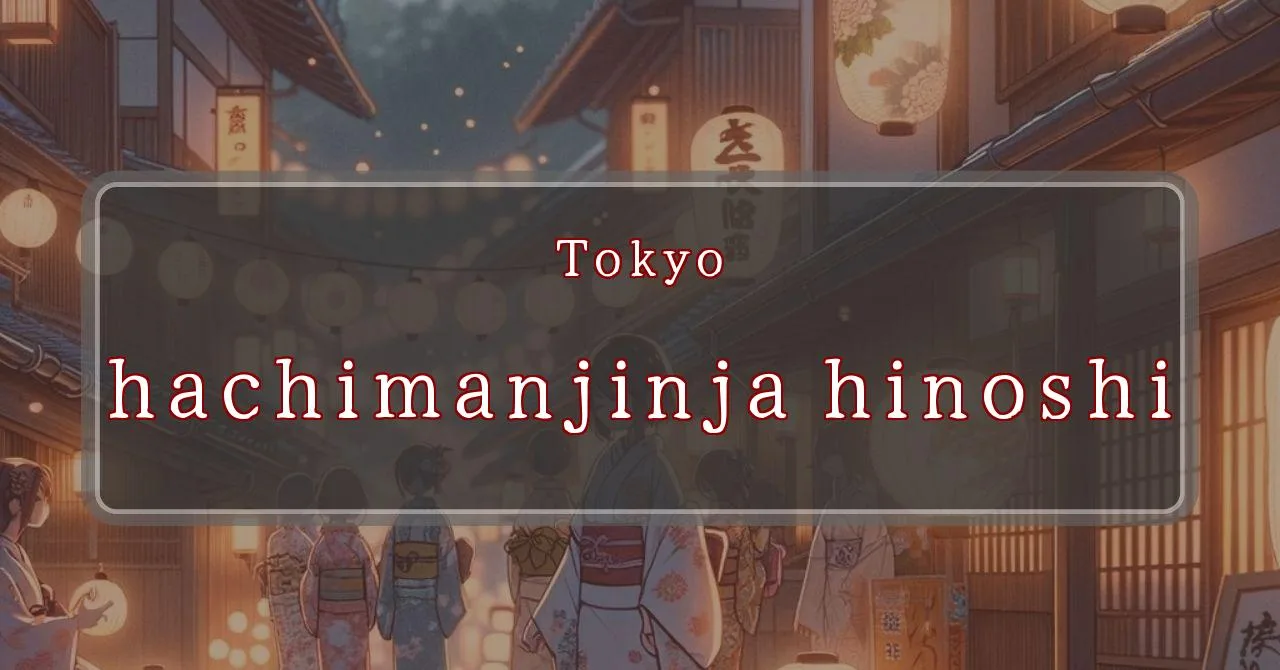Enchanting shrine festival in Hino, a fusion of tradition and vibrancy
Basic Information
Hachiman Shrine is a Shinto shrine located in Hino, Tokyo, Japan. It is dedicated to the deity Hachiman, the god of war and archery.
- Address: 3-23-3 Misawa, Hino, Tokyo 191-0011
- Phone Number: 042-582-3914
- Access: 8-minute walk from Keio Line Hyakusawaen Station
- Festival Days: September 15th (Sunday), 2024 (Reiwa 6)
Main Events and Attractions of the Festival
The Hachiman Shrine Festival is a lively and colorful event that attracts many visitors each year. The main events and attractions of the festival include:
Mikoshi Procession
The mikoshi procession is the highlight of the festival. A mikoshi is a portable shrine that is carried through the streets by a team of people. The Hachiman Shrine mikoshi is a large and elaborate structure, and it is carried by a team of over 100 people. The procession is accompanied by music and dancing, and it is a joyous and festive occasion.
Lion Dance
The lion dance is another popular attraction at the festival. The lion dance is performed by a team of dancers who wear lion costumes. The dancers perform a series of acrobatic and entertaining moves, and they often interact with the crowd. The lion dance is believed to bring good luck and fortune.
Yatai (Food Stalls)
There are many yatai (food stalls) at the festival, selling a variety of delicious foods and drinks. Some of the most popular foods include yakitori (grilled chicken skewers), takoyaki (octopus balls), and kakigori (shaved ice). There are also many games and activities for children, such as goldfish scooping and ring toss.
Fireworks Display
The festival concludes with a spectacular fireworks display. The fireworks are launched from a nearby hill, and they light up the night sky with their brilliant colors. The fireworks display is a fitting end to a fun and exciting festival.
Blessings and Deities
Hachiman Shrine is dedicated to the deity Hachiman, the god of war and archery. Hachiman is also revered as a protector of the nation and a bringer of good fortune. Visitors to the shrine pray for success in battle, victory in sports, and overall good luck.
Origin and History
The origins of Hachiman Shrine are unclear, but it is believed to have been founded in the 14th century. The shrine was originally located in a different part of Hino, but it was moved to its current location in 1639. The shrine has been rebuilt several times over the centuries, most recently in 1953.
Tips and Notes for Visitors
Here are some tips and notes for visitors to Hachiman Shrine:
- The shrine is open daily from 9:00 AM to 5:00 PM.
- Admission to the shrine is free.
- There is a small parking lot at the shrine, but it is often full. It is best to arrive early or use public transportation.
- The shrine is a popular destination for weddings and other ceremonies. If you are visiting during a weekend or holiday, be prepared for crowds.
- There are several restaurants and shops in the area around the shrine. You can also find a few souvenir shops selling items such as amulets and charms.
Parking Information
There is a small parking lot at Hachiman Shrine, but it is often full. It is best to arrive early or use public transportation. There are several coin-operated parking lots in the area around the shrine. The closest one is located just a short walk from the shrine.
Popular Stalls and Food Carts in Recent Years
| Type of Stall | Description |
|---|---|
| Takoyaki | A staple at Japanese festivals. Characterized by a crispy outside and a creamy inside. |
| Jaga Butter | A simple yet popular snack of hot potatoes lavishly topped with melted butter. |
| Baby Castella | Small castella cakes, sweet and fluffy treats enjoyed by children and adults alike. |
| Grilled Ayu with Salt | Fresh ayu fish grilled whole with salt, a savory taste of Japanese summer. |
| Shaapin | A unique gourmet item influenced by foreign cuisine, with a chewy skin wrapping the filling. |
| Okonomiyaki | A Japanese grilled dish where you often choose your own ingredients for a personalized flavor. |
| Cotton Candy | A fluffy, sweet snack that’s extremely popular with children. |
| Chocolate Banana | A banana coated in chocolate, a fun and visually appealing dessert. |
| Kushiyaki | Various types of ingredients skewered and grilled, an easy-to-enjoy snack. |
| Yakisoba | Fried noodles mixed with a special sauce, a fast food favorite in Japan. |



